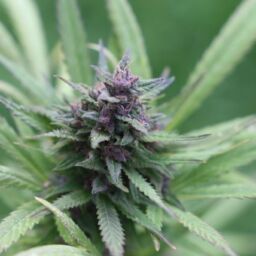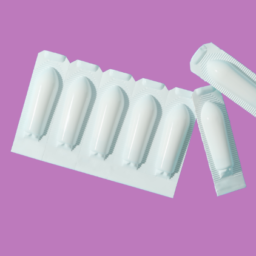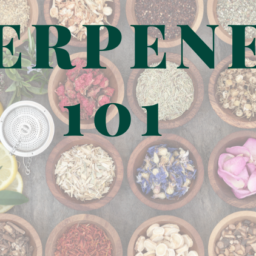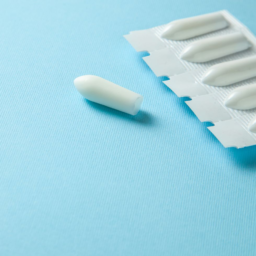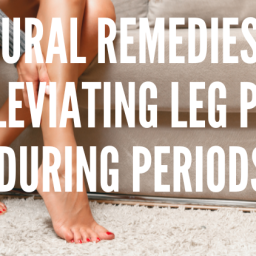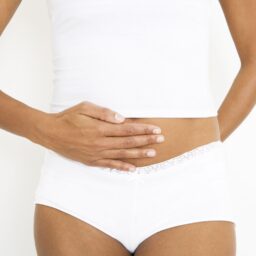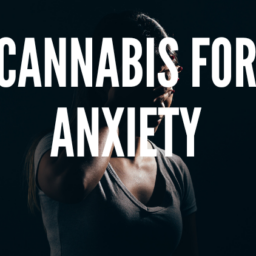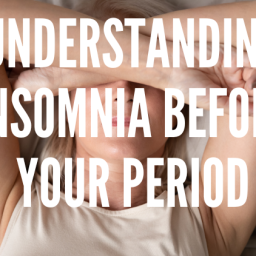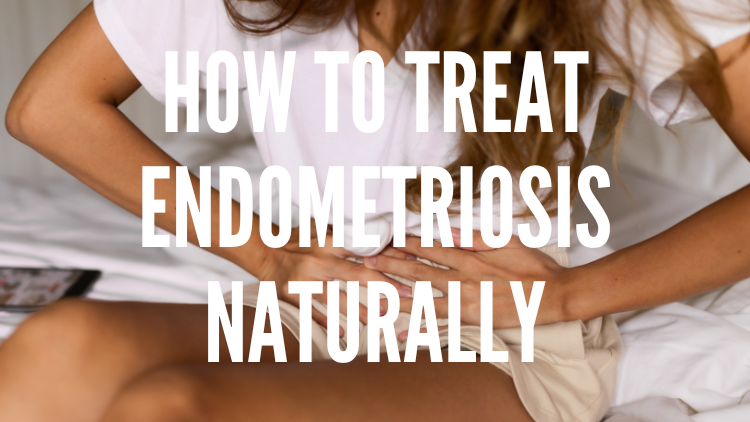
Oof, endo.
If you ask women living with endometriosis about their experiences, you won’t get the same answer twice. The impact endo has on a woman’s life is as unique as the woman living it.
But even in its milder forms, endometriosis has a way of impacting a woman’s quality of life. For some, it means super painful periods. For others, it means dealing with symptoms that affect their whole bodies.
So, in keeping with women’s unique needs (especially the women who find themselves here!) we’re taking you through many of the natural options available, so you can learn a bit more about how to treat endometriosis naturally.
We’re not saying these are replacements for anything your doctor or healthcare provider may have already recommended, or will recommend to you – we’re just giving you a few more tools to add to your self-care belt.
Ready? Let’s go!
Understanding Endometriosis
Did you know that it’s possible to have endometriosis, yet not have any symptoms?
It’s true. While over 11% of American women from 15-44 are estimated to be affected by endometriosis, making it a relatively common condition, an undetermined percentage are nearly or completely asymptomatic. (1)
It’s often mistaken for period pain, or other conditions. Not to get all WebMD on you, but variability of symptoms is one of the ways that makes endometriosis difficult to diagnose.
In fact, the only way to definitively diagnose endometriosis is through surgery. Minimally invasive surgery, but still, surgery. It’s done to confirm the presence of endometrial tissue.
What tissue? Endometriosis is a chronic condition where tissue similar to the uterus lining grows outside the uterus, causing pain, irregular periods, and sometimes fertility issues. Its exact cause is unclear, but thought to be contributed to by genetics and/or hormonal imbalances. (2)
Medically, endometriosis is treated with over-the-counter or prescription pain medication, hormone therapy, and/or surgery.
To recap: endometriosis is a chronic condition of unknown cause only diagnosable by surgery, from which you’ll suffer a range of life-impacting symptoms or few to no symptoms at all.
All the more reason to see what’s out there for the treatment of endometriosis naturally, right?
Lifestyle and Dietary Modifications
The Role of a Balanced Diet in Managing Inflammation
It would be amazing if we could all just eat our way to perfect health.
Unfortunately, while a healthy diet can help tremendously in some cases, it isn’t a panacea.
Especially when it comes to treatment for endometriosis, which is a complex condition caused by multiple factors, none of them being “you eat too many fries.”
But, a balanced anti-inflammatory diet can be an amazing supporter in managing endometriosis and alleviating its symptoms. Yes, fries can be part of a balanced diet!
The key here is eating in a way that alleviates inflammation and supports hormone health, as endometriosis is associated with chronic inflammation and estrogen dominance (aka, too much estrogen in your system).
How do you do that? Great question, love to tell you.
Foods That May Affect symptoms of endometriosis
If you read our blog about how THC can alleviate or increase inflammation in the body, you can apply the same logic here.
If not, fun fact, it totally can. And the logic we’re referring to is how a substance can either increase or decrease inflammation symptoms. In this case, the substance is food.
When you’re eating to reduce inflammation, think fiber-rich and lean protein. (3)
Fiber can help with hormonal balance and inflammation reduction, so choose whole grains, fruits, veggies, and legumes like peanuts and beans into your diet. Lean proteins like chicken, turkey, and tofu function similarly.
On the other side of the coin, you’ll want to avoid trigger foods.
Trigger foods can vary from person to person, but generally, high-caffeine, high-sugar and high-fat foods can and do trigger inflammation.
We’re not dietitians and this isn’t hard-and-fast advice. But getting more fruits, veggies, and protein into your diet is never a bad idea. Always check with a professional before making any major dietary changes.
Oh – and stay hydrated!

Natural Remedies and Supplements
CBD/Cannabis as a Potential Supplement for Managing Symptoms
Speaking of that anti-inflammatory blog post…CBD and cannabis can be a godsend when it comes to managing the chronic and sometimes debilitating pain from endometriosis.
What we learned is that the balance of THC to CBD in the product is what matters, like in Hello Again’s 1:2 THC:CBD Period Pain Relief.
Ideal dosage will vary from person to person, so it’s best to try a variety of THC to CBD ratios when determining what’s going to work best for you.
Luckily, there are a variety of products out there for you to try, in the form of flower, tinctures, edibles, and even suppositories, like Hello Again’s 4:1 THC:CBD Sleep aid.
Outside of inflammation and pain management, there’s the effect on mood to consider. Living with a chronic condition like endometriosis can really get you down. CBD is being investigated for its impact on anxiety and depression, and, as a bonus, won’t get you high. (4)
No matter what you choose to try, you’re going to want to consult with your healthcare provider.
Herbal Options with Potential Benefits for Endometriosis
Maybe you’re not about to partake in any THC or CBD products. And that’s fine!
If you’re more of an herbal girl, turmeric and ginger are two to consider. Turmeric contains a compound called curcumin, which is known for its anti-inflammatory and antioxidant properties.
Ginger is used to manage menstrual cramps and pelvic pain associated with endometriosis. It can be had as a tea, added to meals, or taken as a supplement.
We’ll dive a bit more deeply into herbal options down below. (5)
Stress Management and Mind-Body Techniques
Exploring the Link Between Stress and Endometriosis Symptoms
There’s no doubt that a dose of stress can cast a shadow on even the brightest of days.
And when you’re dealing with a chronic condition, well, stress seems to be an ever-present issue. The more stressed you are, the more tense you are, and the more tense you are, the worse you feel.
When you’re stressed, you can get stuck in a freeze response, which is exactly what it sounds like. Adding gentle, simple movements into your routine can help melt that freeze response and gradually reduce stress.
You’re a smart cookie – we bet you thought “yoga” when we mentioned gentle movement. And you’d be right! Simply searching “gentle yoga flow” or “chill yoga flow” on YouTube brings up some great, easy routines.
The more you move your body, the less stress can get stuck in it.
And if meditation is more you, YouTube can be a great resource. There are also apps like Headspace to help you wrap your head around the whole mindfulness thing.
Physical Therapies and Pain Management
The Role of Physical Therapy in Relieving Pelvic Pain
If, like many women, you’ve had a negative experience with a healthcare provider who hasn’t listened to your concerns and prescribed medication without considering holistic alternatives, you might want to get in touch with a pelvic floor physical therapist.
Yep, there are physical therapists dedicated to the pelvic floor!
Since that’s their whole deal, they can take you through exercises, pain management strategies, and techniques to manage your pelvic pain, especially pelvic pain caused by endometriosis. (7)
They’ll be able to design a program just for you that addresses your specific needs, helping you take care of your body on your own time.
We understand that it can be hard to reach out to a new resource, especially if you’ve been burned before. But there are health practitioners ready to help who are dedicated to women’s health, and you deserve the best care out there.
Hormone Regulation through Natural Approaches
Understanding Hormonal Imbalances and Their Connection to Endometriosis
Earlier, we mentioned estrogen dominance as a cause of tissue overgrowth that is indicative of endometriosis.
Estrogen dominance happens when estrogen and progesterone, both hormones, are out of whack in your body.
Progesterone is what regulates your menstrual cycle. In cases of endometriosis, there may not be enough progesterone in the body, which leads to that tissue overgrowth.
Hormonal imbalances can also contribute to the body’s inflammatory response, spiking it in response to the excess tissue in its abnormal locations.
Exploring Herbal Supplements for Hormone Balance
You know those sign spinners?
The ones that stand outside stores and point to where a sale is going on? Imagine we’re waving a big sign pointing to this section, one saying “Proceed With Caution”.
Herbal supplements can be very powerful aids, but they can also produce a host of unwanted side effects. Not to mention, they can negatively interact with medications you’re already taking.
We do want to keep you informed, so consider the following educational info as something you can take to your doctor with questions.
Now, a list of several herbal supplements that have been used to balance hormones, alleviate inflammation, and relieve pain (5):
– Black Cohosh: used to manage menopausal symptoms and regulate hormone fluctuations.
– Maca Root: thought to help balance hormones, particularly estrogen and progesterone.
– Chasteberry: thought to help regulate the menstrual cycle and relieve PMS symptoms.
– Dong Quai: used in Chinese medicine, believed to regulate estrogen levels.
– Red Clover: contains phytoestrogen, which mimics the effects of estrogen in the body.
– Wild Yam: contains diosgenin, which can be converted to progesterone.
Like we said, proceed with caution! And always consult a medical professional.
The Role of Seed Cycling and Lifestyle Adjustments in Hormone Regulation
Seed cycling. Heard of it?
It’s a natural approach to hormone regulation that involves incorporating specific seeds into your diet during different phases of your cycle, with the idea that certain seeds have certain nutrients that can support hormonal balance. (8)
Talk about treating endometriosis naturally! Here’s the gist:
Days 1-14: This is your follicular phase. Here, it’s suggested to consume flaxseeds*, which are rich in essential fatty acids, believed to support estrogen production and metabolism.
Days 15-28: This is your luteal phase. Here, it’s recommended to consume pumpkin seeds, which are good sources of magnesium and zinc, thought to support progesterone production and balance.
*One important thing about flaxseeds – don’t eat them raw. If you do purchase ground flaxseed, toast it before blending into a smoothie or cook/bake it before consuming. One tablespoon a day is all you need to obtain the fatty acids mentioned above. (9)
And, as always, consult with your doctor or health provider before taking on a new nutrition regimen.
Gut Health and Inflammation
The Gut-Endometriosis Connection: Exploring the Link
When we said endometrial tissue can grow anywhere in the body, we meant anywhere.
Sometimes, that tissue growth extends into the abdomen and digestive system. It’s not pleasant to think about, but some cases of endo do involve lesions or implants on the abdominal wall.
And of course, those lesions or implants create symptoms, ranging from abdominal pain to bloating to diarrhea and constipation.
This actually makes it even more tricky to diagnose, since these symptoms do mimic IBS. (10)
Often, proper management of gut-related endometriosis means collaboration between your gyno and your gastro to address all your symptoms.
In the meantime, though, you’re not powerless. There are some measures you can take yourself to maintain your gut health.
Gut-Focused Strategies for Managing Inflammation and Symptoms
What we mentioned above is still true – eating a fiber-rich diet, consuming lean protein, and getting plenty of essential omega-3s are all key to great gut health and helping to treat endometriosis naturally.
If you’re looking for a little extra boost, you can try prebiotics and probiotics. (10)
Prebiotics are indigestible compounds in certain foods that feed your good gut bacteria. And they’re found in such a wide variety of foods, it’s pretty easy to fit them into your diet. Foods like garlic, onions, asparagus, and bananas all make the grade, and can help grow good bacteria in your gut.
Probiotics are live bacteria that can help you maintain a healthy balance of gut flora. Foods like yogurt, kefir, sauerkraut, kimchi, and other fermented foods all contain probiotics.
Probiotic supplements also exist, but you’ll want to do a bit of research before buying. Firstly because they can get quite expensive, and secondly because different strains impact different conditions. Your healthcare provider can answer any questions you may have.
Seeking Professional Guidance
The Significance of Consulting a Healthcare Provider or Specialist
Whether you’re seed cycling, pounding prebiotics, or double-fisting CBD and THC, consulting with your healthcare provider is paramount.
Every one of the natural remedies and supports we’ve outlined come with their own set of risks and side effects, risks and side effects you may not be aware of if you don’t do your due diligence.
Not to sound like a total bummer, but there’s not much point in trying any of these methods if you don’t consult your doctor. They’ll know what conditions and medications you already have, and the outcome of what someone with your unique medical history may encounter.
Monitoring and Patience
In the same way you’ll want to check in with your doctor, you also want to check in with yourself.
Trying anything new takes a lot of guts, and a lot of patience – so pat yourself on the back!
At the same time, don’t expect overnight results. Pills are designed to be relatively instant relief. Diet and lifestyle changes are anything but.
You can use this time as a super self care ritual, one that can have life-changing effects. If you take the time to track what you’ve tried, when, and how long, then you can celebrate your wins while managing your conditions better than ever before.
Sure, it takes a little effort – but you’re worth it.
Conclusion
We’ll say it again: you’re worth it.
You deserve to enjoy life as much as you possibly can, and we’re honored to support you. If supplementing with CBD and THC is right for you, we’re right here.
And if you find that yoga and diet change keep your endometriosis pain at bay, we’re happy to hear it.
Endometriosis can be debilitating, but you’re not powerless to suffer through it. And while there is no cure for endometriosis there are options for treating it naturally, medically, or some combination of the two, take heart in the fact that you’re in charge, and you’ve got this.
Sources
1. https://www.healthline.com/health/home-remedies-for-endometriosis
2. www.mayoclinic.org/diseases-conditions/endometriosis/symptoms-causes/syc-20354656
3. https://www.verywellhealth.com/natural-treatments-for-endometriosis-89275
4. https://honahlee.com.au/articles/cannabis-cbd-oil-endometriosis
5. https://www.webmd.com/women/endometriosis/herbs-for-endometriosis
6. https://healthmatch.io/endometriosis/how-to-treat-endometriosis-without-surgery
7. https://www.healthline.com/health/endometriosis/pelvic-floor-physical-therapy
8. https://www.endo-plus.com/en/hormone-balance-via-seed-cycling/
9. https://www.lybrate.com/topic/flaxseed-benefits-and-side-effects 10. https://entegrohealth.com/endometriosis/
